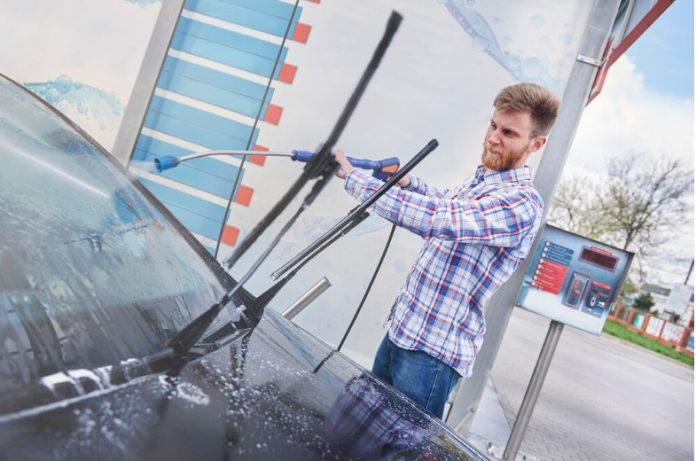DIY deck power washing is a popular method for homeowners looking to restore the appearance of their outdoor decks. Over time, decks can accumulate dirt, grime, mould, and mildew, making them look aged and worn. Power washing can effectively clean and rejuvenate a deck’s surface, but it requires the right technique and precautions to avoid damage. This article will explore various methods and tips for successfully power washing your deck as a DIY project, ensuring a safe and effective clean that revitalizes your outdoor living space.
Choosing the Right Power Washer
Selecting an appropriate power washer is the first crucial step in DIY deck cleaning.
Types of Power Washers: Electric power washers are generally more suitable for light-duty tasks like deck cleaning. Gas-powered models are more powerful but may be too harsh for some deck materials.
Pressure Settings: Look for a power washer with adjustable pressure settings. A pressure range of 1200 – 1500 PSI is often adequate for decks. Higher pressure can damage the wood.
Nozzle Selection: Use a wider fan nozzle to disperse water over a larger area, reducing the chance of damaging the wood. Avoid using zero-degree nozzles, which can be too intense for deck surfaces.
Preparing Your Deck for Power Washing
Proper preparation is key to effective and safe power washing.
Clear the Deck: Remove furniture, grills, and other items from the deck to ensure a thorough clean.
Sweep and Inspect: Sweep the deck to remove loose dirt and debris. Inspect the deck for any damaged areas that might need repair before washing.
Protect Surrounding Areas: Cover nearby plants and landscaping to protect them from the high-pressure water and cleaning solutions.
Wet the Surface: Lightly wet the deck with water before applying any cleaning solution. This helps the cleaner to penetrate and work more effectively.
Applying Cleaning Solutions
Using the right cleaning solution can enhance the effectiveness of your power washing.
Deck Cleaning Solutions: Choose a cleaner specifically designed for decks. These solutions help to break down tough grime and mildew without harming the wood.
Homemade Solutions: For a DIY cleaning solution, mix water with mild dish soap or a mix of vinegar and water for a natural option.
Application: Apply the cleaning solution with a sprayer or a brush. Let it sit for a while to loosen the dirt, but don’t let it dry completely.
Power Washing Technique
The correct technique is crucial for cleaning your deck effectively without causing damage.
Maintain Distance: Hold the power washer nozzle about a foot away from the deck surface. You can adjust this distance based on the washer’s pressure and the deck’s condition.
Consistent Movement: Keep the nozzle moving in a consistent, sweeping motion. Staying in one spot too long can etch the wood.
Direction of Wash: Power wash along the grain of the wood to avoid damage and achieve a more even clean.
Rinsing: Thoroughly rinse the deck with plain water to remove all cleaning solutions and loosened dirt.
Post-Cleaning Care and Maintenance
After power washing, proper care ensures the longevity and appearance of your deck.
Drying Time: Allow the deck to dry completely, which may take a couple of days, before replacing furniture or walking on it.
Sealing or Staining: Consider sealing or staining your deck after washing. This provides protection from the elements and helps maintain the wood’s appearance.
Regular Maintenance: Regularly sweep and lightly clean your deck to prevent the build-up of dirt and grime.
Addressing Common Challenges in DIY Deck Power Washing
DIY deck power washing can present several challenges that need careful handling to ensure a successful outcome.
Dealing with Stubborn Stains: For tough stains like oil or grease, you may need to apply a specialized cleaning solution and scrub the area before power washing.
Avoiding Water Damage: Ensure that the deck is not overly saturated and that water is not forced into cracks and crevices, which can lead to wood rot or mould growth.
Preventing Striping: Striping occurs when the power washer leaves visible lines on the deck. To avoid this, overlap each pass slightly and maintain a consistent distance and pressure.
Safety Considerations for DIY Power Washing
Safety is paramount when undertaking a DIY power washing project on your deck.
Personal Protective Equipment: Wear protective gear such as goggles, gloves, and non-slip shoes to protect yourself from high-pressure water and debris.
Understanding Your Power Washer: Familiarize yourself with the power washer’s operation and safety features. Always follow the manufacturer’s instructions.
Secure the Area: Make sure the area is secure and that children and pets are kept at a safe distance during the power washing process.
Awareness of Electrical Safety: Be cautious around electrical outlets, fixtures, and power lines. Use a ground fault circuit interrupter (GFCI) for added electrical safety.
Long-Term Deck Care Post Power Washing
Maintaining your deck after power washing extends its life and appearance.
Regular Inspections: Regularly inspect your deck for signs of damage, wear, or rot, especially after harsh weather conditions.
Timely Repairs: Address any issues such as loose boards, protruding nails, or cracks promptly to prevent further deterioration.
Routine Cleaning: Implement a routine cleaning schedule to keep your deck looking its best. This includes sweeping, spot cleaning, and periodic washing.
Sealant Reapplication: Reapply sealant or stain every few years to protect the wood from moisture and UV damage.
Conclusion
DIY deck power washing can be a rewarding project that revitalizes your outdoor space. By selecting the right equipment, preparing your deck properly, using the correct cleaning solutions and techniques, and following up with appropriate maintenance, you can effectively clean your deck while preserving its integrity. Remember, patience and attention to detail are key to achieving a fresh, clean look for your deck.
